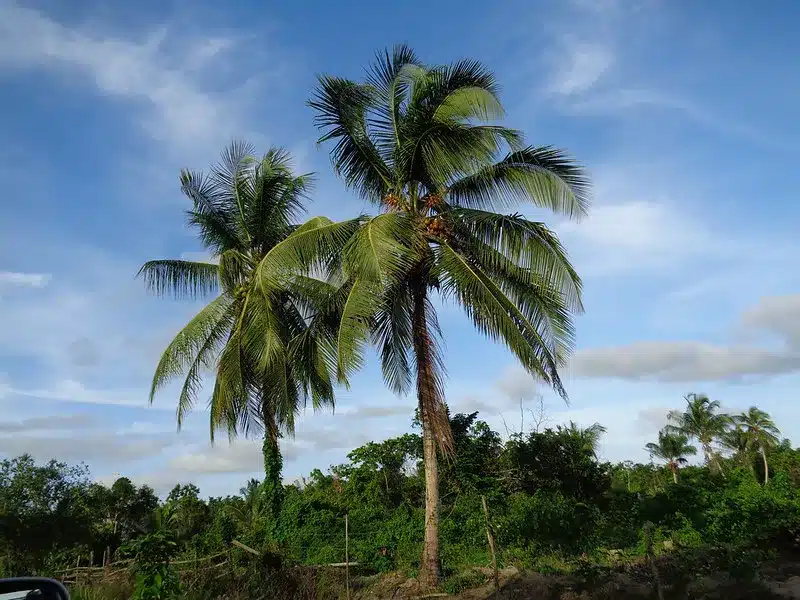Palm trees are not only common in Texas, but they are also an important component of the landscape, giving the state a tropical feel. However, preserving these gorgeous trees takes meticulous attention, especially when it comes to cutting. In this complete tutorial, we’ll go over when to trim palm trees in Texas. Understanding the best time to prune palm trees in the Texas environment is critical to their health and lifespan. Let’s begin by exploring the most effective methods to maintain the health and vibrancy of your palm trees throughout the year.
Understanding palm trees in Texas
Various factors, such as species and habitat, influence the wide range of development patterns of palm trees in Texas. The state is home to a diverse range of palm tree varieties, including the Mexican Fan Palm, Canary Island Date Palm, and Texas Sabal Palm, each with its specific growth requirements. Soil quality, solar exposure, and water availability play important factors in determining palm tree growth in Texas. Understanding these dynamics is critical for guaranteeing the health and development of palm trees, allowing enthusiasts and landscapers to cultivate these famous emblems of Texas beauty with precision and care.
Varieties of Palm Trees in Texas

In Texas, palm trees adorn the landscape with their distinctive shapes and foliage, showcasing a diverse array of varieties. Among the most common palm tree species found in the Lone Star State is the majestic Mexican Fan Palm, known for its towering height and graceful fronds. The elegant Canary Island Date Palm adds a touch of exotic flair with its striking silhouette and clusters of golden dates. Meanwhile, the hardy Texas Sabal Palm, with its fan-shaped leaves and stout trunk, thrives in the state’s diverse habitats. These palm tree varieties contribute to the rich tapestry of Texas’s natural beauty, each bringing its own unique charm to gardens, parks, and streetscapes across the region.
Factors Affecting Palm Tree Growth in Texas
Several factors exert influence on the growth and development of palm trees in Texas, shaping their overall health and appearance. Soil quality plays a crucial role, with well-drained, nutrient-rich soils providing optimal conditions for root establishment and growth. Sunlight exposure is another key factor, as palm trees require ample sunlight to photosynthesize and thrive. Adequate water availability is essential, especially during the hot and dry Texan summers, to ensure proper hydration and nutrient uptake. Additionally, factors such as temperature fluctuations, humidity levels, and wind exposure can impact palm tree growth, requiring careful consideration when selecting planting locations and implementing maintenance practices. By understanding and addressing these factors, enthusiasts can foster healthy and robust palm tree growth in the Texan landscape.
When to trim palm trees in Texas?
Timing is crucial when it comes to trimming palm trees in Texas. Trimming at the right time can promote healthy growth and prevent damage to the tree.
The best time to trim palm trees in Texas
The optimum time of year to trim palm trees in Texas is from late winter to early spring, usually between February and April. During this time, the weather is quite mild, with temperatures ideal for palm tree maintenance. Trimming in late winter allows the palm tree to recover quickly and prepare for the next growing season. It is critical to avoid cutting during periods of high heat or cold, as this can stress the tree and impair its capacity to recuperate correctly. By timing the cutting procedure appropriately, homeowners and landscapers can promote healthy development and keep palm trees looking good all year. Remember to plan pruning appointments ahead of time to guarantee your palm trees in Texas receive regular upkeep and produce ideal results.
Related Posts:
Avoiding Trimming During Extreme Weather
Avoiding cutting palms in harsh weather conditions is critical for the trees’ health and safety. Extreme heat can stress out palm trees, making them more vulnerable to damage and taking longer to recover from pruning cuts. Trimming during periods of excessive cold can also damage trees and impair their ability to recuperate correctly. Schedule palm tree trimming operations during gentler weather, such as late winter or early spring, when temperatures are moderate and consistent. By avoiding cutting during severe weather, homeowners and landscapers can reduce the danger of palm tree damage and enhance their long-term vitality and resilience in the Texas climate.
Proper techniques for trimming palm trees
Proper palm tree trimming techniques are critical to ensuring the trees’ health and aesthetics while minimizing the risk of damage. Start by using sharp, clean pruning tools, such as hand pruners or loppers, to make precise cuts and prevent the palm fronds from tearing or crushing. When trimming, focus on removing dead or yellowing fronds first, starting from the bottom and working your way up the tree. Be sure not to cut into the green, healthy fronds, as this can stress the tree and impede its growth.

Additionally, thinning out the palm tree’s canopy is crucial for promoting air circulation and sunlight penetration. To open up the canopy and allow light to reach the inner foliage, selectively remove overcrowded or crossing fronds. However, be careful not to over prune the palm tree, as this can leave it vulnerable to sunburn and other stress-related issues.
Throughout the trimming process, take breaks as needed to assess your progress and ensure that you’re following proper techniques. If you’re unsure about how to trim your palm tree safely and effectively, consider hiring a professional arborist with experience in palm tree care. By employing proper trimming techniques, you can help your palm trees thrive and maintain their beauty for years to come.
FAQS
How Often Do Palm Trees Need Trimming?
Trimming palm trees annually is ideal to remove dead or dying fronds and promote healthy growth.
Can I trim my palm tree myself?
While it’s possible to trim small palm trees yourself, larger trees may require professional arborist services to ensure safe and proper trimming.
Will trimming harm my palm tree?
When done correctly, trimming should not harm the palm tree. It can improve its health and appearance.
What Happens If I Don’t Trim My Palm Tree?
Neglecting to trim palm trees can lead to the accumulation of dead fronds, which pose a fire hazard and provide a habitat for pests and disease.
Can I trim my palm tree in the summer?
It’s best to avoid trimming palm trees during the summer months, as this can stress the tree and impede its ability to recover.
How Do I Dispose of Trimmed Palm Fronds?
Dispose of trimmed palm fronds responsibly by composting them or arranging for green waste collection services.
Conclusion
When to trim palm trees in texas is crucial for maintaining their health, vitality, and aesthetic appeal in the Texas landscape. By understanding the optimal timing and techniques for trimming, homeowners and landscapers can promote healthy growth and minimize the risk of damage to the trees. Remember to trim palm trees during late winter or early spring, avoiding extreme weather conditions that can stress the trees. Utilize sharp, clean pruning tools and focus on removing dead or yellowing fronds while thinning out the canopy to promote air circulation and sunlight penetration. With proper care and attention, palm trees in Texas can thrive and enhance the beauty of their surroundings for years to come.




